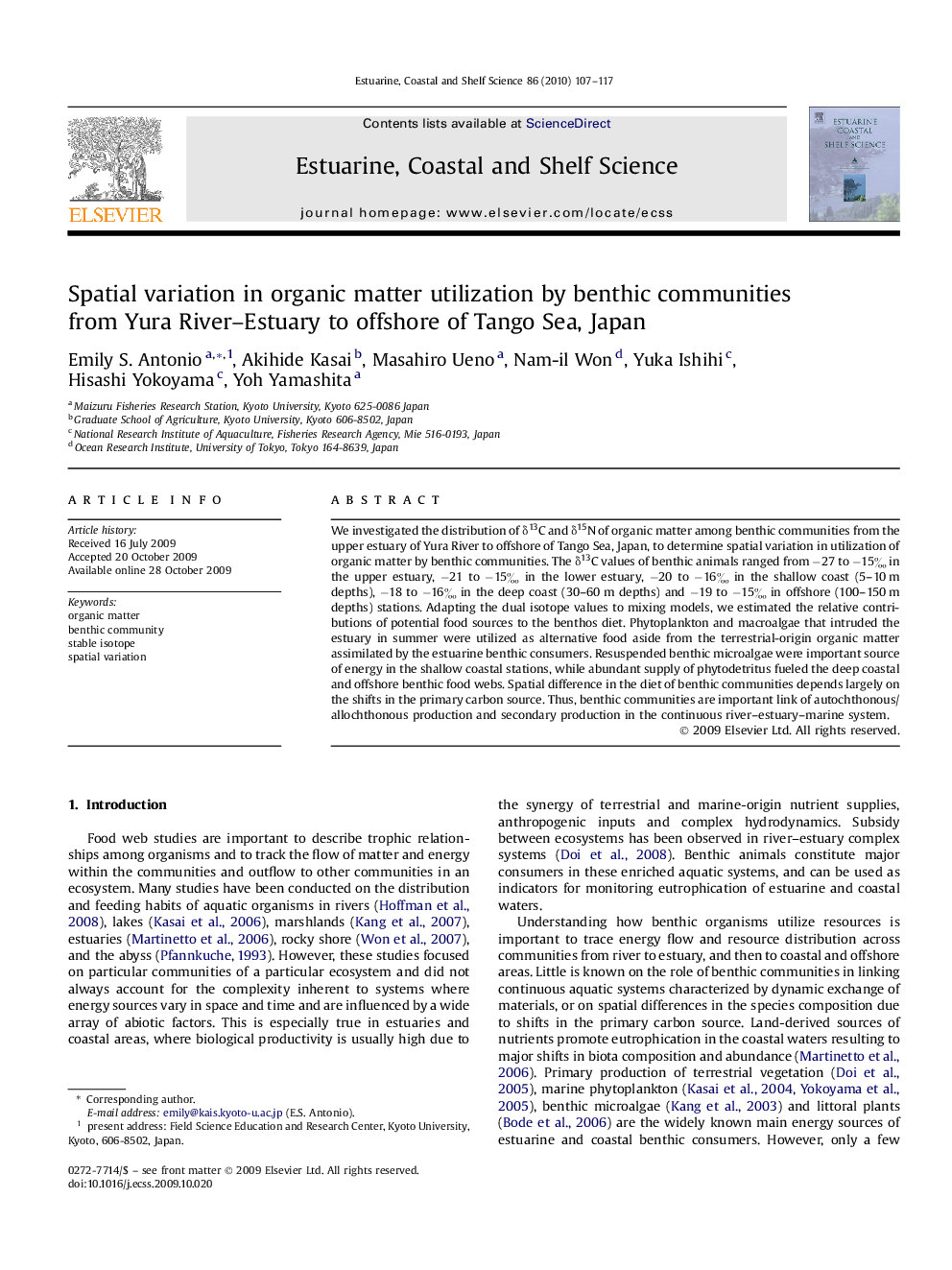| Article ID | Journal | Published Year | Pages | File Type |
|---|---|---|---|---|
| 4541118 | Estuarine, Coastal and Shelf Science | 2010 | 11 Pages |
Abstract
We investigated the distribution of δ13C and δ15N of organic matter among benthic communities from the upper estuary of Yura River to offshore of Tango Sea, Japan, to determine spatial variation in utilization of organic matter by benthic communities. The δ13C values of benthic animals ranged from â27 to â15â° in the upper estuary, â21 to â15â° in the lower estuary, â20 to â16â° in the shallow coast (5-10 m depths), â18 to â16â° in the deep coast (30-60 m depths) and â19 to â15â° in offshore (100-150 m depths) stations. Adapting the dual isotope values to mixing models, we estimated the relative contributions of potential food sources to the benthos diet. Phytoplankton and macroalgae that intruded the estuary in summer were utilized as alternative food aside from the terrestrial-origin organic matter assimilated by the estuarine benthic consumers. Resuspended benthic microalgae were important source of energy in the shallow coastal stations, while abundant supply of phytodetritus fueled the deep coastal and offshore benthic food webs. Spatial difference in the diet of benthic communities depends largely on the shifts in the primary carbon source. Thus, benthic communities are important link of autochthonous/allochthonous production and secondary production in the continuous river-estuary-marine system.
Related Topics
Physical Sciences and Engineering
Earth and Planetary Sciences
Geology
Authors
Emily S. Antonio, Akihide Kasai, Masahiro Ueno, Nam-il Won, Yuka Ishihi, Hisashi Yokoyama, Yoh Yamashita,
